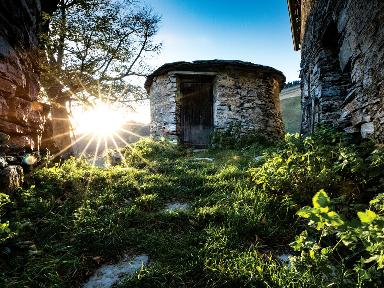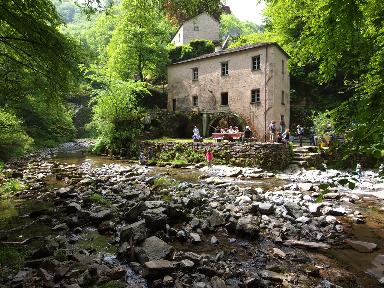
The word “torba” refers to the characteristic wood and stone constructions used to store cereals, especially rye, grown in the valleys and mountains up to 1,500 metres. On top of the dry masonry foundations rest the four or more so-called “funghi” (mushrooms), of a total height of about one metre. These are formed by wooden or stone legs topped by roughly rounded slabs of granite, about 80 cm in diameter, to support the granary, built from square wooden beams. The discs deterred mice while the legs isolated the crops from soil moisture. Some torbe were surrounded by a ledge with rod cages to expose the sheaves and allow them more opportunity to mature. The origin of this type of construction is unknown as the term also referred to torbe intended for habitation or as stables used by the Walser population who came to the Valmaggia in around 1250. The earliest used for grain storage can be dated to the 16th century. There are still 73 in Valmaggia, although their use came to an end with the last rye fields after 1930. The oldest torbe are those in Sonlerto in Val Bavona (1591) and Mogno, a hamlet near Fusio (1651). The one in Bosco Gurin may be the largest and still bears an inscription with the name of the owner and the date of 20 June 1805.









